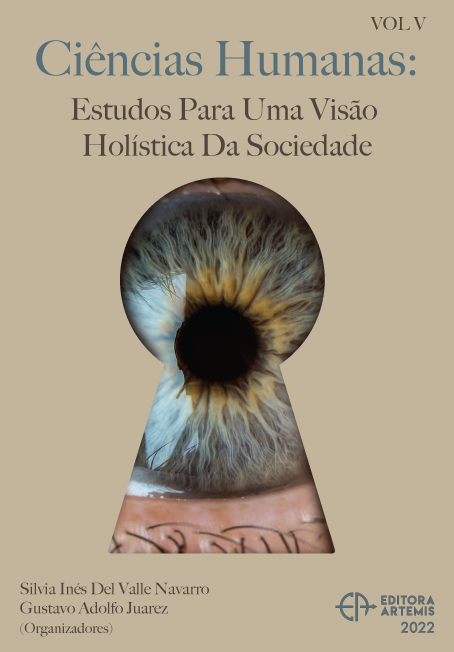
ELEMENTOS PARA UM ESTUDO MULTIESPÉCIES EM INTERFACE COM A EDUCAÇÃO NO ANTROPOCENO: PRÁTICA E EXPERIÊNCIA NO MELIPONÁRIO CANTINHO DO CÉU, GUARAMIRANGA - CE.
No presente manuscrito, pretendo mobilizar as principais categorias de análise que venho trabalhando ao longo do curso de doutorado em educação no Programa de Pós-Graduação em Educação, pela Universidade Federal do Ceará, cujo título da tese em processo de desenvolvimento é “Aprendizado técnico como mecanismo de manutenção da vida: etnografia multiespécies no Meliponário Cantinho do Céu, Área de Proteção Ambiental da Serra de Baturité, em Guaramiranga, Ceará”. O foco da pesquisa é direcionado ao processo de aprendizado técnico desenvolvido por Seu Antônio relacionado a criação de Abelhas Nativas Sem Ferrão (CORTOPASSI-LAURINO; NOGUEIRA-NETO, 2016) no Meliponário Cantinho do Céu - MCC do qual é responsável. Nessa relação, as abelhas ocupam o lugar de mestras pelo Seu Antônio, que se inspira nas dimensões ecológicas (ODUM, 1971) e etológicas (LORENZ, 1995) das abelhas, como estratégia para respondê-las significativamente (DOOREN; KIRSKSEY; MÜNSTER, 2016). Para tal, farei inserções de notas etnográficas em conjunto com a bibliografia selecionada, no intuito de contribuir para refletir sobre os estudos multiespécies em interface com a educação, voltado para a convivência interespecífica no Antropoceno (MELO et al.,2022). O trabalho propõe buscar um modo diferente de estar e viver no mundo, principalmente no que concerne uma abordagem científica. Dentre as categorias que poderão elucidar e orientar essa questão, estão o – engajamento (INGOLD, 2010, 2020, 2015a, 2015b), estudos multiespécies (HARAWAY, 2015, 2021; KIRKSEY; HELMREICH, 2020; OLIVEIRA, 2020; SÜSSEKIND, 2018; TSING, 2015, 2019, 2022; respostas significativas (DOOREN; KIRSKEY; MÜNSTER, 2016), técnica (LEROI-GOURHAN, 1984, 1987; SAUTCHUCK, 2012, 2013, 2015, 2017, 2018), experiência (DEWEY, 1979, 2010), dentre outros.
ELEMENTOS PARA UM ESTUDO MULTIESPÉCIES EM INTERFACE COM A EDUCAÇÃO NO ANTROPOCENO: PRÁTICA E EXPERIÊNCIA NO MELIPONÁRIO CANTINHO DO CÉU, GUARAMIRANGA - CE.
-
DOI: 10.37572/EdArt_15122270527
-
Palavras-chave: Estudos multiespécies; Abelhas Nativas Sem Ferrão; Educação; Antropoceno; Experiência.
-
Keywords: Multispecies studies; Native Stingless Bees; Education; Anthropocene; Experience.
-
Abstract:
In the present manuscript, I intend to mobilize the main categories of analysis that I have been working on during the doctoral course in education at the Graduate Program in Education, at the Federal University of Ceará, whose thesis title in process of development is “Technical learning as a mechanism for maintaining life: multispecies ethnography in the Meliponário Cantinho do Céu, Environmental Protection Area of Serra de Baturité, in Guaramiranga, Ceará”. The focus of the research is directed to the technical learning process developed by Seu Antônio related to the creation of Native Stingless Bees (CORTOPASSI-LAURINO; NOGUEIRA-NETO, 2016) at the Meliponário Cantinho do Céu - MCC of which he is responsible. In this relationship, bees take the place of masters for Seu Antônio, who is inspired by the ecological (ODUM, 1971) and ethological (LORENZ, 1995) dimensions of bees, as a strategy to significantly respond to them (DOOREN; KIRSKSEY; MÜNSTER, 2016). To this end, I will insert ethnographic notes together with the selected bibliography, in order to contribute to reflect on multispecies studies in interface with education, aimed at interspecific coexistence in the Anthropocene (MELO et al., 2022). The work proposes to look for a different way of being and living in the world, especially with regard to a scientific approach. Among the categories that can elucidate and guide this issue are – engagement (INGOLD, 2010, 2020, 2015a, 2015b), multispecies studies (HARAWAY, 2015, 2021; KIRKSEY; HELMREICH, 2020; OLIVEIRA, 2020; SÜSSEKIND, 2018 ; TSING, 2015, 2019, 2022; meaningful responses (DOOREN; KIRSKEY; MÜNSTER, 2016), technique (LEROI-GOURHAN, 1984, 1987; SAUTCHUCK, 2012, 2013, 2015, 2017, 2018), experience (DEWEY, 1979, 2010), among others.
-
Número de páginas: 26
- George Arruda de Albuquerque
- Alcides Fernando Gussi

